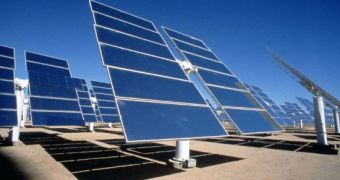It would appear that the United States is indeed committed to upping its dependence on green energy sources in order to lower its annual emissions, and put a leash on climate change and global warming.
The only problem is that, every once in a while, its renewable energy projects are frowned upon by the general public and some specialists who have other things apart from environmental protection and sustainable development on their mind.
Long story short, EcoWatch tells us that, presently, both ordinary folks and historians are quite upset at the thought that the high officials in Los Angeles are moving forward with plans to erect a brand-new solar energy plant.
What bothers them is the fact that this plant is to be built at a distance of just 3.5 miles (roughly 5.6 kilometers) east of the Mnazanar National Historic Site, i.e. a World War II Japanese American internment camp.
This place was declared a historic site back in 1992, over half a century after Pearl Harbor, and historians and members of the general public believe that it should not be disturbed by erecting a solar energy plant this close to it.
“For the sake of our visitors' experiences and the memories of our former internees, we must advocate for the area to remain undeveloped,” Les Inafuku, the superintendent of the Manzanar National Historic Site, told the press in a recent interview.
“It would be cruel to industrialize this landscape,” added Paul Huelte, an environmental advisor and member of the Big Pine Paiute Tribe.
High officials in Los Angeles maintain that the area they have chosen for the construction of this solar energy plant has great potential for harvesting this green power source, and that the project will not affect the historic site negatively neither culturally-wise nor from a business standpoint.
The solar plant in question is expected to be completed in about five years' time. It will comprise one million photovoltaic panels, and it will have an annual output of 440 gigawatt hours. This energy will suffice to meet the demand of 75,000 households.

 14 DAY TRIAL //
14 DAY TRIAL //